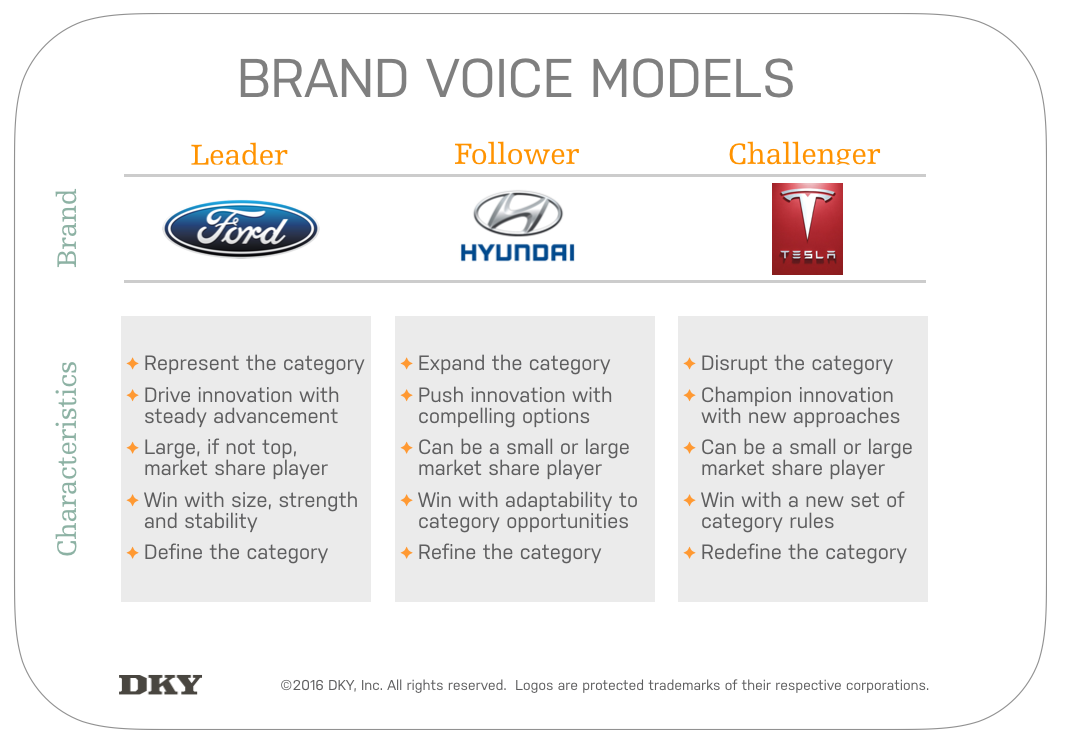A brief overview of three brand voices that are likely in your competitive set: the Leader, the Follower, and the Challenger.
At a conference DKY attended earlier this year, one agency principal spoke on the rise of the Challenger brand in modern business. His premise: every brand needs to embrace a Challenger element to thrive. If you’re not continually reinventing your product or service offering as part of your business plan, you’re at risk.
The argument is compelling when you consider the growing list of breakthrough Challenger brands in recent years:
- Uber and Lyft have completely disrupted the long-standing taxi service industry.
- Dollar Shave Club and Harry’s have presented a serious threat to decades of dominance by the category leader in men’s razors.
- Travel industry titans are scrambling to compete with wave after wave of technology-enabled alternatives like Hipmunk, HotWire and Airbnb.
Even brand marketing and advertising agencies must adapt to Challenger service offerings in areas like digital marketing, marketing automation and content platforms.
To help you consider what this means for your brand and business, here is a brief overview of three brand voices that are likely in your competitive set: the Leader, the Follower, and the Challenger.
The Leadership brand is pretty self explanatory. Leaders are the dominant players. In many cases they are representative of the category. They have the biggest booth at the trade show and enjoy significant mind and market share. Ford, Gillette, and Nike are examples of Leadership brands.
The Follower brand can thrive in a given market, as well. But they are typically recognized as an alternative to Leader brands based on a competitive advantage. They may be a lower cost alternative or address a specialty need. Rather than defining the category, they leverage differentiation. Hyundai, Norelco, and New Balance are examples of Follower brands.
The Challenger brand has an altogether different voice. Rather than competing in a category, they aim to change it altogether. Challengers look to replace the criteria that defines an established product or service by rewriting the rules. Tesla, Dollar Shave Club, and TOMS are examples of Challenger brands.

There is a compelling argument to infuse some Challenger strategy into your business. The intersection of technology and empowered customers is fostering new business models every day. And in many cases, these new Challengers are providing a significant threat to long-established businesses.
The key is alignment of your business objectives and brand strategy – in this case, brand voice. And brand voice is ultimately about the customer. Keep your business firmly rooted in meeting your customer needs, and you won’t be led astray.
Each brand voice has its merits. Just be sure your brand voice Rings True.
